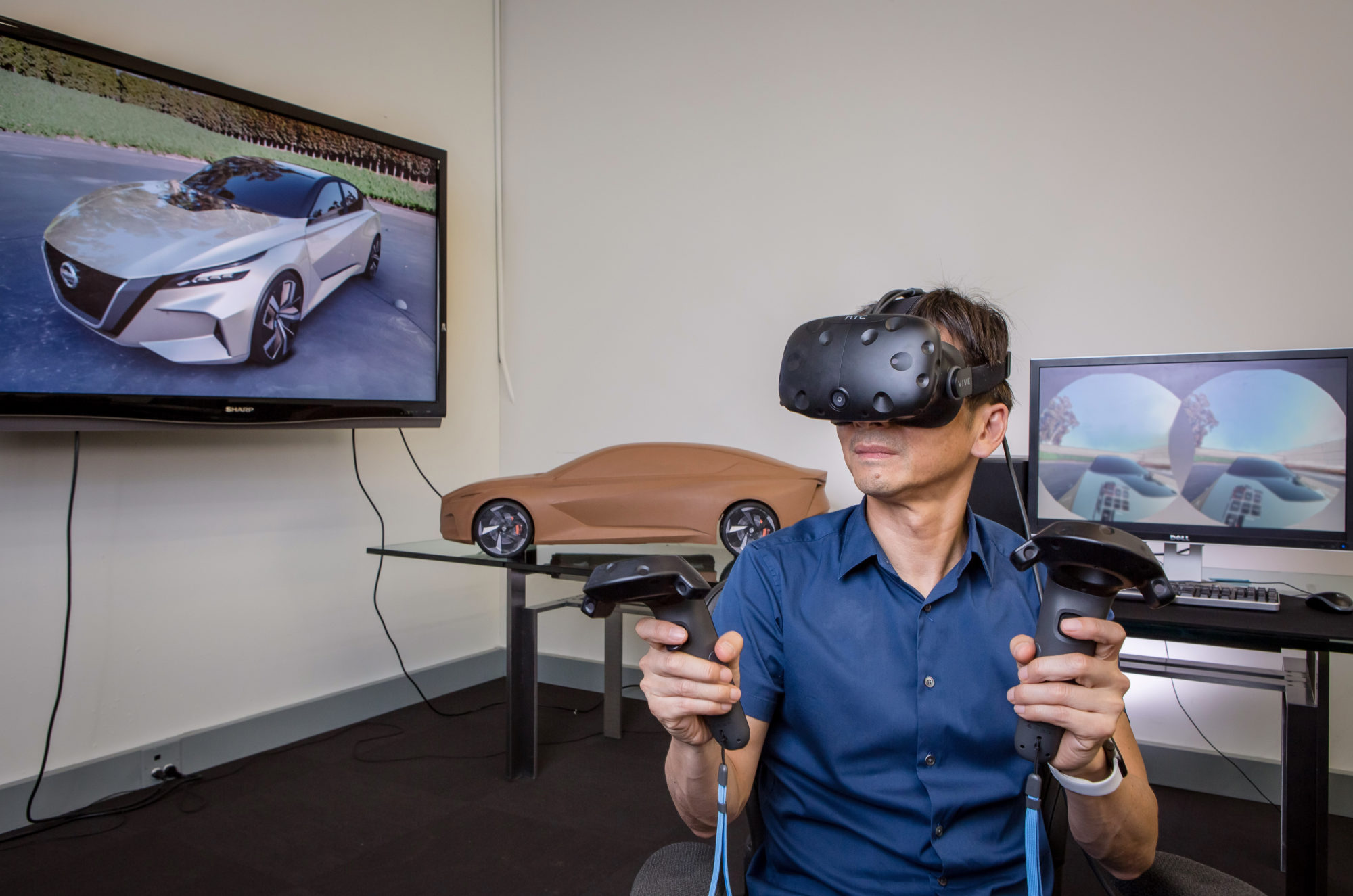Like children begging for a shiny new toy, automotive designers can be reduced to stammering and sputtering in the presence of VR goggles. Taro Ueda, vice president of Nissan Design America, plays the placating parent at the Japanese carmaker’s advanced-design studios in San Diego: “They say, ‘We need to go to VR! We need to go to VR!’ Okay, fine, we can go to VR,” he says.
Though building cars remains among the most resource-intensive of industrial pursuits, new technologies are helping carmakers shorten development timelines. One of the sexier arrivistes is the VR headset, which has been adopted across the industry’s design studios to shave precious days, even weeks, from the calendar.
“It can be difficult to judge the effectiveness of a design on just a screen, even if it’s fully rendered and projected at actual size,” says Geoff Wardle, the executive director of the Graduate Transportation Systems and Design program at Art Center College of Design. “But if we put it on a VR headset, we can walk around a model and maybe judge it more accurately.”
Art Center, located in Pasadena, California, is one of the car industry’s top incubators of design talent, and this summer Wardle is coteaching a course with Maggie Hendrie, the school’s Interaction Design department chair, about how people will experience personal transportation in the coming decades. As designers themselves, Hendrie and Wardle recognize VR’s growing value. “We see our students using it as a way to prototype not just the surfaces and materials and form factors, but what’s also happening around the vehicle—the shadows, the reflections,” Hendrie says.
The notion that begoggled designers would pace around a virtual car to scrutinize how shadows fall across fenders will please science fiction fans. But car design, at least traditionally, has been rooted in the realm of graphite pencils and mood boards. Is something tactile at risk of being lost?
Ironically, VR may actually be reinforcing the role of clay modeling—the process of rendering a digital design physical, often at full size, in the studio. “It’s still important to make the final design,” Ueda says. “We can touch, we can feel it with our fingers—we need that to finish our design.”
Alfonso Albaisa, who leads global design for Nissan from Tokyo, is quick to point out that the addition of VR goggles to the tool box doesn’t change a designer’s considerations of proportion, packaging, and presence. “Because of the speed you can have with VR, there’s lots of spontaneity,” he says. “But our spontaneity is still in the engineering layer. You’re never going completely off the rails.”
Besides, that romantic vision of a pen-and-paper past is already quaint for most design studios, whether they use VR or not. Even on his lowest-tech day, Albaisa is creating his designs on a computer, then watching his team overlay them in real time. “Innovation may still be the product of human endeavor,” Albaisa says. “But you can’t be afraid of the future.”

